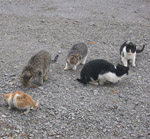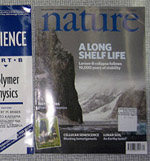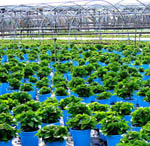Can invasive species enhance the competitve ability of native grasses?
 Invasive,
Invasive,  Plants,
Plants,  Restoration
Restoration Over the past few years, restoration ecologists have made a surprising discovery - the invasion of exotic plants may enhance the competitive ability of native species. Scientists hypothesize that native plants which survive an invasion of exotic species may possess a competitive advantage against the invader which is then reinforced through evolutionary selection.
Research in 2006 supported this idea by finding that native plants in an invaded area had genetic differences from individuals in the same species in a nearby non-invaded location. Follow-up research in 2007 found that native grasses from areas invaded by Russian knapweed (Acroptilon repens) in Wyoming grew better in garden experiments side-by-side with the exotic plant then grasses from the same species taken from non-invaded areas.
This idea has powerful implications for restoration practice. If surviving native plants from an invaded landscape have superior competitive characteristics, these "experienced" plants may serve as better seed source for certain restoration scenarios.
Now a new study in the journal Restoration Ecology extends this idea even further by finding that "experienced" native grasses from Russian Knapweed invasions do better against other exotic plants not from the original invasion site - in this case Canada thistle (Cirsium arvense).
Angel Ferrero-Serrano and fellow researchers looked at two native grass species - the cool-season, needle-and-thread grass (Hesperostipa comata) and the warm season, alkali sacaton (Sporobolus airoides) - and compared their relative growth in garden plots with Canada thistle. In general, grasses taken from sites invaded with Russain knapweed were more competitive against Canada thistile (i.e had greater biomass, initiated more tillers).
One lingering question is whether the grasses from invaded sites truly have a genetic-based competitive advantage or whether other factors might be at play. For example, the study authors concede that differences in soil microbial communities from invaded sites may confer advantages to native plants from those areas compared to non-invaded settings.
Another issue is whether restoration practitioners can actually take advantage of whatever competitive advantages do exist. The authors note that seed suppliers are reluctant to use native sources from invaded sites because they want to minimize the corruption of the supply with non-native seeds that can often be small and hard to detect. Nevertheless, the researchers write,
"Invasion 'experienced' native plants can be more competitive with invaders but are often excluded as restoration materials. By excluding native materials within weed-invaded sites, we may lose the competitive advantage."
--Reviewed by Rob Goldstein
Ferrero-Serrano, A., Hild, A., & Mealor, B. (2009). Can Invasive Species Enhance Competitive Ability and Restoration Potential in Native Grass Populations? Restoration Ecology DOI: 10.1111/j.1526-100X.2009.00611.x




Reader Comments